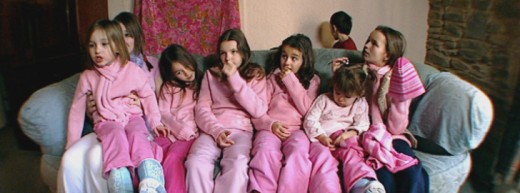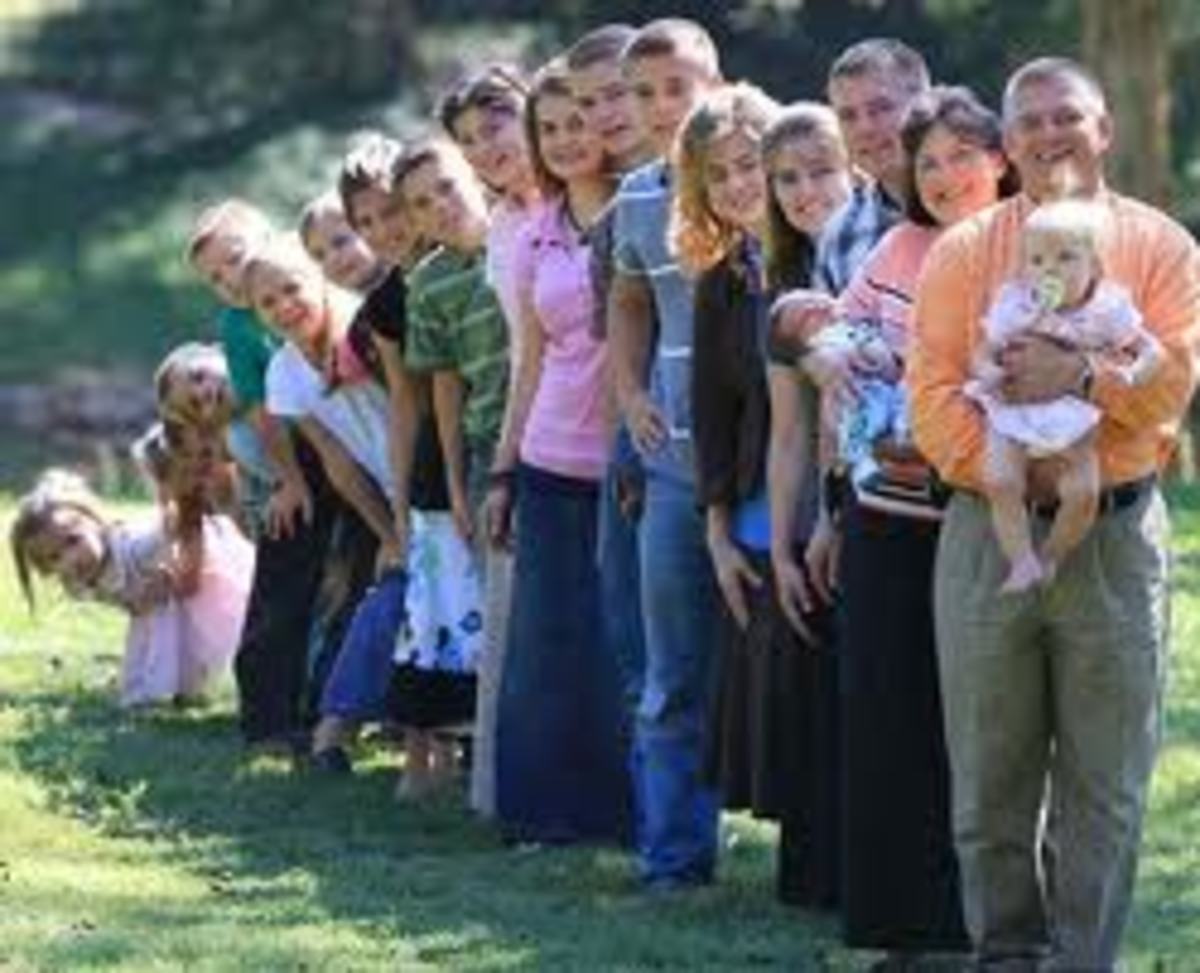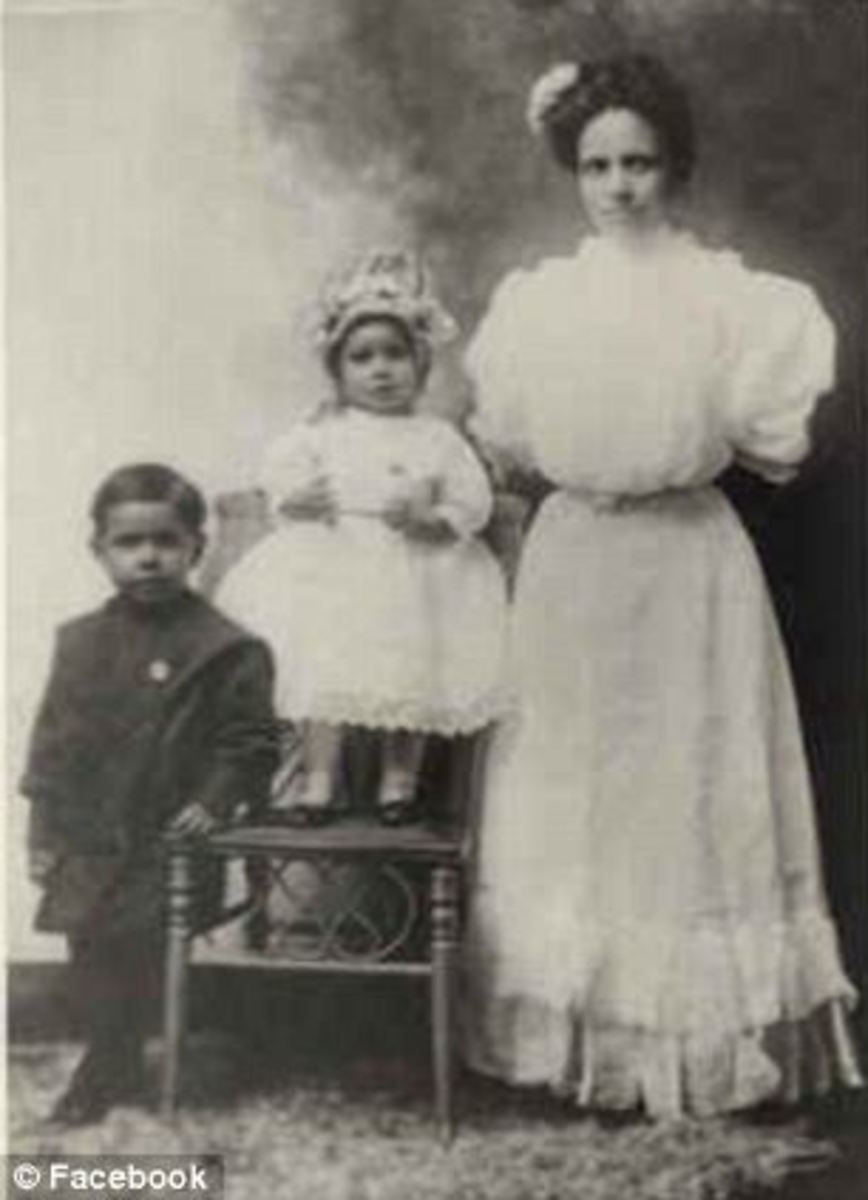The Heretofore of the Large Family System, Part 1/3

The WHYs, HOWs, And WHATs Of The Large Family System
Part 1 of 3 of this hub is in response to the request WHAT ARE SOME OF THE ADVANTAGES AND DISADVANTAGES OF HAVING A LARGE FAMILY by esteemed sister hubber cardisa.
There are varied definitions as to what is a large family. According to the sociological definition, a large family is defined by 5 or more children in the same family. Even then there is disagreement on the issue at hand. Some contend that 5 children are not classified as a large family but a medium sized while others contend that 5 children are what one would call a medium large family. However, I am going to apply the working definition of a large family which will be classified as 6 or more children.
I. THE PREVALANCE OF AND THE REASONS FOR THE LARGE FAMILY IN THE PREURBAN ECONOMY-THE LARGE FAMILY AS A SUPPORT SYSTEM AND SOCIAL NETWORK
The large family was highly advantageous in a more rural, preurbanized, and agrarian era. Parents produced a large number of children as they were deemed necessary to help them effectiely farm, manage, and work the land. More children per household per had a lot of children which were quite necessary to help them effective farm, manage, and work the land. More children guaranteed more profits as the more people worked the land, the greater the economic returns would be. Yes, children were viewed as contributing assets to the familial socioeconomic whole.
The large family was also a social care network for family members. In more rural, preurbanized, and agrarian times, there was not a wide social care network as it is today. There were very few social institutions available to care for ailing famly members whether it was sick children, orphans, widows, widowers, ailing/aged parents, and/or disabled relatives.
The large family served this purpose. Having a lot of children was viewed as an inbuilt social security system by parents and/or other older relatives. Life expectancy was shorter than it is currently. It was not uncommon for children to die in childhood. People had a lot of children to ensure that at least some children would be alive in adulthood to provide care for them in their old age of if they became infirmed and/or disabled before old age.
Large families also provided financial and emotional support to singles relatives, particularly single female relatives. Large families ensured that single relatives, especially single female relatives, would not be left bereft and/or destitute. In more rural, preurbanized, and agrarian times, with few exceptions, there was an unwritten expectation that women were to be married. There were few avenues which single women could earn a decent living. If a woman was unmarried, she was in the care of her family. Large families provided single woman a caring network both financially and emotionally.
II. THE EFFECT THAT INCREASING URBANIZATION HAD UPON FAMILY SIZE- THE DETRIMENTS OF THE LARGE FAMILY IN URBAN SOCIETIES AND THE NEED FOR IMPLEMENTING FAMILY PLANNING MEASURES
In the late 19th and early 20th centuries, there was increasing urbanization. People left rural areas and began to migrate to urban areas. There was also massive immigration from European countries. While space in rural areas were immense, it was quite the opposite in urban areas. Unless one was socioeconomically affluent and/or wealthier, space was at its premium. It was not unusual for a group of people to live in a limited amount of space.
Whereas children were viewed as assets in more rural, preurbanized, and agrarian societies, they tended to be viewed as a socioeconomic liability as socieites become more urbanized and modern. In rural, preurbanized, and agrarian societies, more children equaled more profits as those children were contributing members as they worked the land. in urban societies, children contributed less so the more children, the more parental expenditures needed to socioeconomically support them. The rate of poverty increased in urban areas as parents had more children than they could reasonably support.
It was not unusual for many couples to have at least 7 children with quite a few having 10-20 children. The rate of poverty increased in urban areas as parents were having more children than they could afford. Fathers wondered how they were going to support their ever growing families. Many men were so overwhelmed at the prospect of supporting their large families that many of them deserted and/or abandoned their families.
This resulted in their wives and children becoming wards of charities. If the wives and children were not supported by charities, they often beg and/or resorted to less reputable ways to earn a living. Many oldest/older children were also sent to work in order to supplement their families' income. It was not unusual for children in these urban environments to be working as young as 10 years old.
Large families also strained marital relatonships by placing undue socioeconomic stress on the father. In addition to that, it caused extreme psychological, emotional, and mental stress on the mother. These factors often led to domestic and child abuse. There were instances of abandoned and/or throwaway children as their parents either became too overwhelmed to care for them or they just could no longer afford to support their ever increasing family.
Abandoned and/or throwaway children often lived on the streets and/or in deserted areas. Such children were often left to their own devices, fending for themselves. Some begged while others joined gangs and/or became involved in more nefarious/criminal activities in order to survive.
The increasing levels of large families in urban areas was a cause for alarm. People wanted to find a workable solution for this social problem. The large family which was fine in rural, preurbanized, agrarian, and less modern societies became increasingly problematic as societies become more modern and urbanized. In rural, agrarian societies, there was space in which to raise a large family whereas in urban cities, there was little space to do so
III. HOW THE GRADUAL IMPLEMENTATION OF BIRTH CONTROL RESULTED IN THE GRADUALLY DECREASE OF LARGE FAMILIES
Birth control before the early 20th century, at least among the lower socioeconomic classes, were either unheard of and/or rudimentary at best. The only women who had access and/or knowledge of birth control methods were usually wealtheir, more educated, more sexually progressive, and/or women in the health and/or medical specialities i.e. herbalists, nurses, doctors, midwives, and/or other practictioners.
In addition to the fact that there was little or no access to birth control information before the advent of the early 20th century, there were strong moral and religious prohibitions against the use of birth control. It was taught at the time that birth control was an unnatural practice. The societal inculcation was that good married women should view sex as a marital duty to her husband and that the ultimate purpose of sex was for procreation. In essence, women were just to grin and bear it regarding sex. There was a message that sex for pleasure was sinful and evil.
The issue of increasing large families in urban areas caused the usual social problems as delineated above. In addition to those factors, many women's health were irreparably damaged as a result of excessive childbirths. Margaret Sanger, a nurse, saw the importance of family planning and reducing family size with the purpose of creating a better family life for all involved, especially the children.
With that goal in mind, Margaret Sanger began to educate women, especially poorer women, about the benefits using birth control. From first hand experience interfacing with such women, how difficult it was for them to adequately take care of their large families and provide them with the individualized attention they need. She knew how detrimental large families in terms of the quality of care given to the children of such families. She wanted women to be in control of their reproductive destiny.
Ms. Sanger's battle to educate women regarding the dissemination of birth control informatoin was an arduous one. Religious authorities were adamantly against any dissemination of birth control knowledge. It was those authorities' belief that children were preordained and there should be no "interference" in that regard. Some religious authorities further portended that if women used birth control, it would lead to "illegitimate" and "unnatural" sexual acts.
Not only religious authorities but many men believed that women were not to have any type of voice regarding sexual matters. These men asserted that women were preordained to be the subordinate and submissive sex. They strongly contended that the use of birth control would make women more dominant, therefore less feminine.
Despite massive oppostion, Ms. Sanger nevertheless began to establish birth control clinics and to continue educating women regarding the importance of birth control. As more women use birth control, family size gradually became smaller. In congruence with that, women obtained more freedoms i.e. the right to vote and more jobs were available to them. In the 1920s, women had freedoms, economic, social, and sexual that they did not have previously.
Even though birth control made some significant inroads in society, many people continued to have large families. There were many reasons for this. Many people believed that more children in a family would prove their authenticity as parents. Many lower socioeconomic income people simply did not have access to birth control, particularly in rural areas. Still others staunchly contended that sex should only be for procreation and to use any type of preventives is unnatural.








